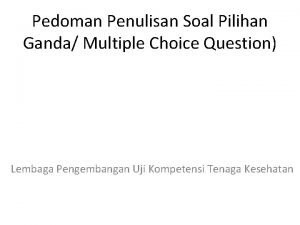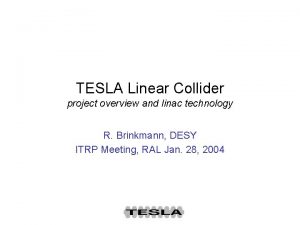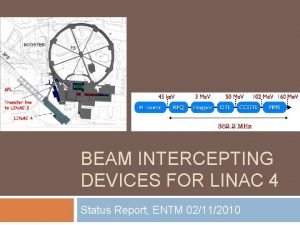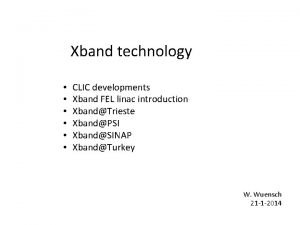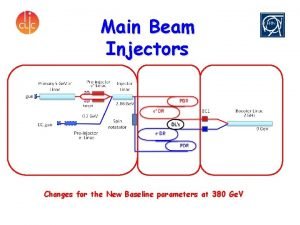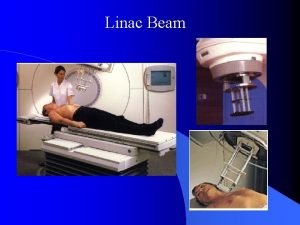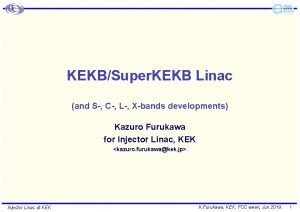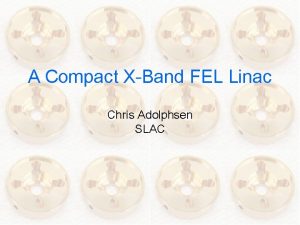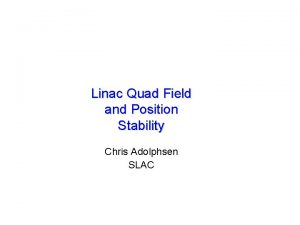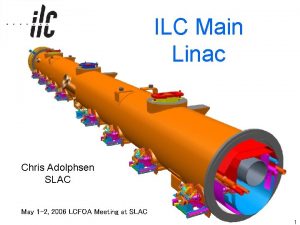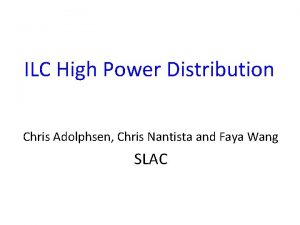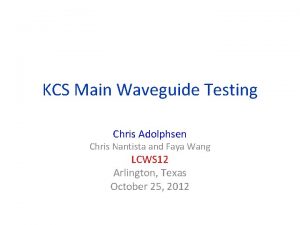Low Power Option Linac Implications Chris Adolphsen Chris







- Slides: 7

Low Power Option: Linac Implications Chris Adolphsen Chris Nantista SLAC

Bunch Spacing • With either full compliment of bunches of half the number, have some flexibility to vary the bunch spacing. – DR spacing much shorter than that in linac • For example, choosing a longer spacing – Decreases the beam current (I) – Reduces the input power per cavity (~ I) and hence the number of fixed-power rf sources (reduces cost). – Lengthens the fill time and bunch train (~ 1/I), which increases the dynamic cryoload (increases cost). • The cost minimum is very shallow about the RDR design choices (cost uncertainties too large to compute precise minimum within +/- 50%)

Practical Constraints • Longer spacing – More chance of HV/RF breakdown in modulators/klystrons due to the longer rf pulse length (not so for cavities, which can run CW). – The smaller cavity bandwidth makes it harder to regulate the gradient. – Losses in the waveguide distribution system grows as more cavities are fed per klystron (although could use low loss circular mode, but the pipe size would be large). • Shorter spacing – More chance of rf breakdown in the couplers due to the higher power (although could use a waveguide coupler, but the cryo heat load would increase significantly).

Half Bunch Options • 50% Current (‘Half Current’) – Reduces number of rf sources by 50% and AC power by 24% – RF pulse lengths increases for 1. 56 ms to 2. 16 ms where there are no data on reliability for the 10 MW system (in fact, there is little at 1. 56 ms). – Required cryo capacity increases by 7% • 69% Current (‘Same Pulse Width’) – – Reduces number of rf sources by 31% and AC power by 26% RF pulse length unchanged at 1. 56 ms Required cryo capacity decreases by 7% Cost savings about the same (perhaps less by about 20 M$) when factor cost of rf system (including learning curves), electrical and water/cryo cooling.

Bandwidth Concern • For the RDR, the cavity BW is 370 Hz (Qext = 3. 5 e 6) – RMS frequency spread from microphonics generally below 5 Hz at FLASH – Lorentz Force Detuning is several hundred Hz, but the piezo controllers can reduce it below 50 Hz (residual increases as gradient^2) • If accommodate a spread in cavity gradients, Qext will be double for the lowest gradients (-20%) • If halve current, Qext will double again, so the lowest gradient cavities will have a BW of 93 Hz (close to that being considered for CW ERLs) • This will make it harder to achieve a constant gradient during the pulse.

Fractional Size Flattop Operation with a Spread of Cavity Gradients Qext Input Power Reflected Power Gradient 31. 5 MV/m Average 24. 5 MV/m 29. 8 MV/m 38. 5 MV/m

Summary • ‘Same Pulse Width’ option more appealing for several reasons including the higher cavity BW • KCS and DRFS have pro and cons as to changing current – KCS can be more easily configured for higher currents although klystron pulse length may be near the limit at 1. 6 ms – DRFS distribution is quantized but not likely pulse width limited due to the lower power • Will refine beam current choice in near future
